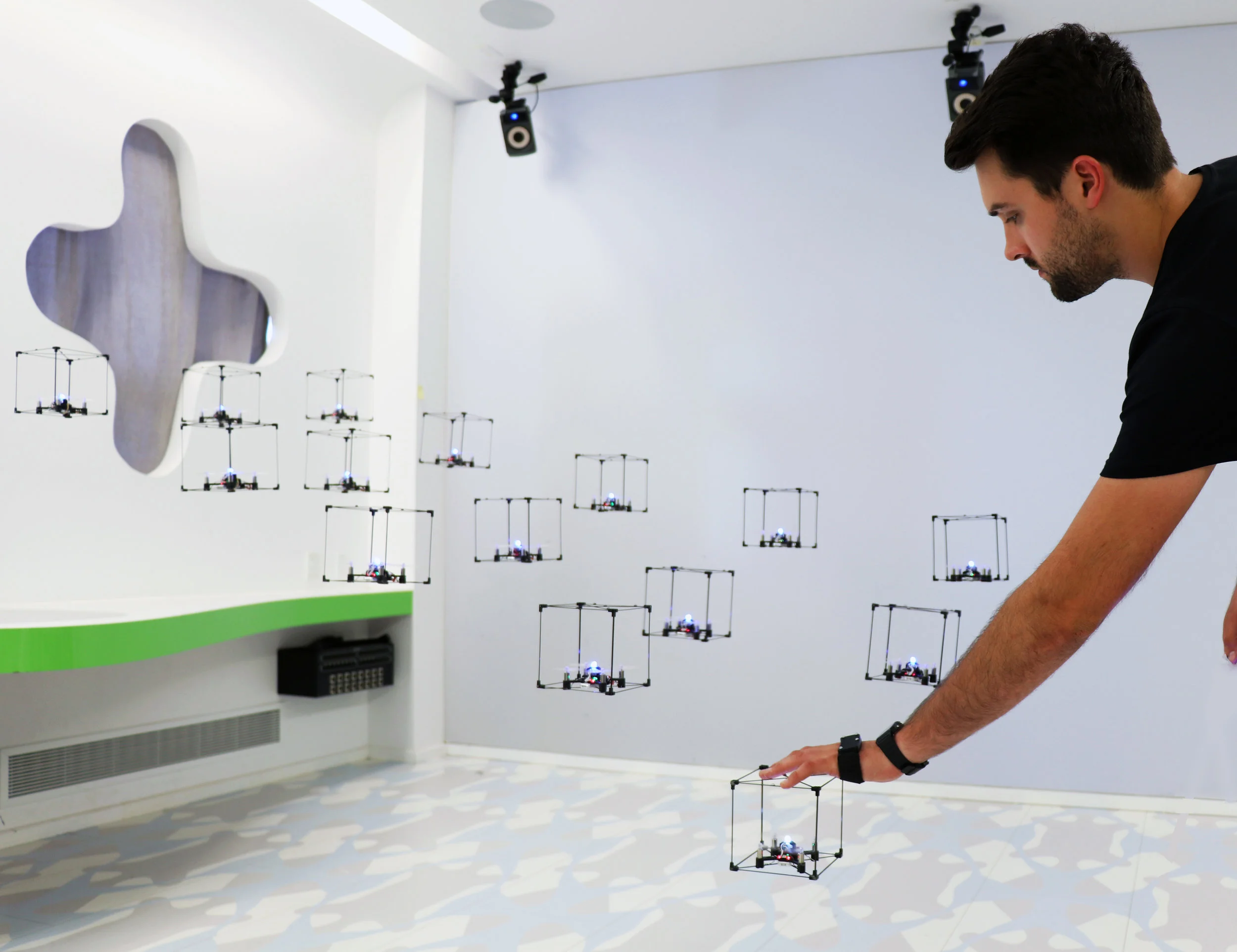(Note that the flicker in the video is due to the interaction of the camera shutter with the 45 projector shutters, and is not visible to users)
Projected self-levitating light field display allows users to hover in remote places
GLASGOW – This week, Human Media Lab researchers will unveil LightBee - the world’s first holographic drone display. LightBee allows people to project themselves into another location as a flying hologram using a drone that mimics their head movements in 3D - as if they were in the room.
“Virtual Reality allows avatars to appear elsewhere in 3D, but they are not physical and cannot move through the physical space” says Roel Vertegaal, Director of the Human Media Lab. “Teleconferencing robots alleviate this issue, but cannot always traverse obstacles. With LightBee, we're bringing actual holograms to physical robots that are not bound by gravity.”
Read More

